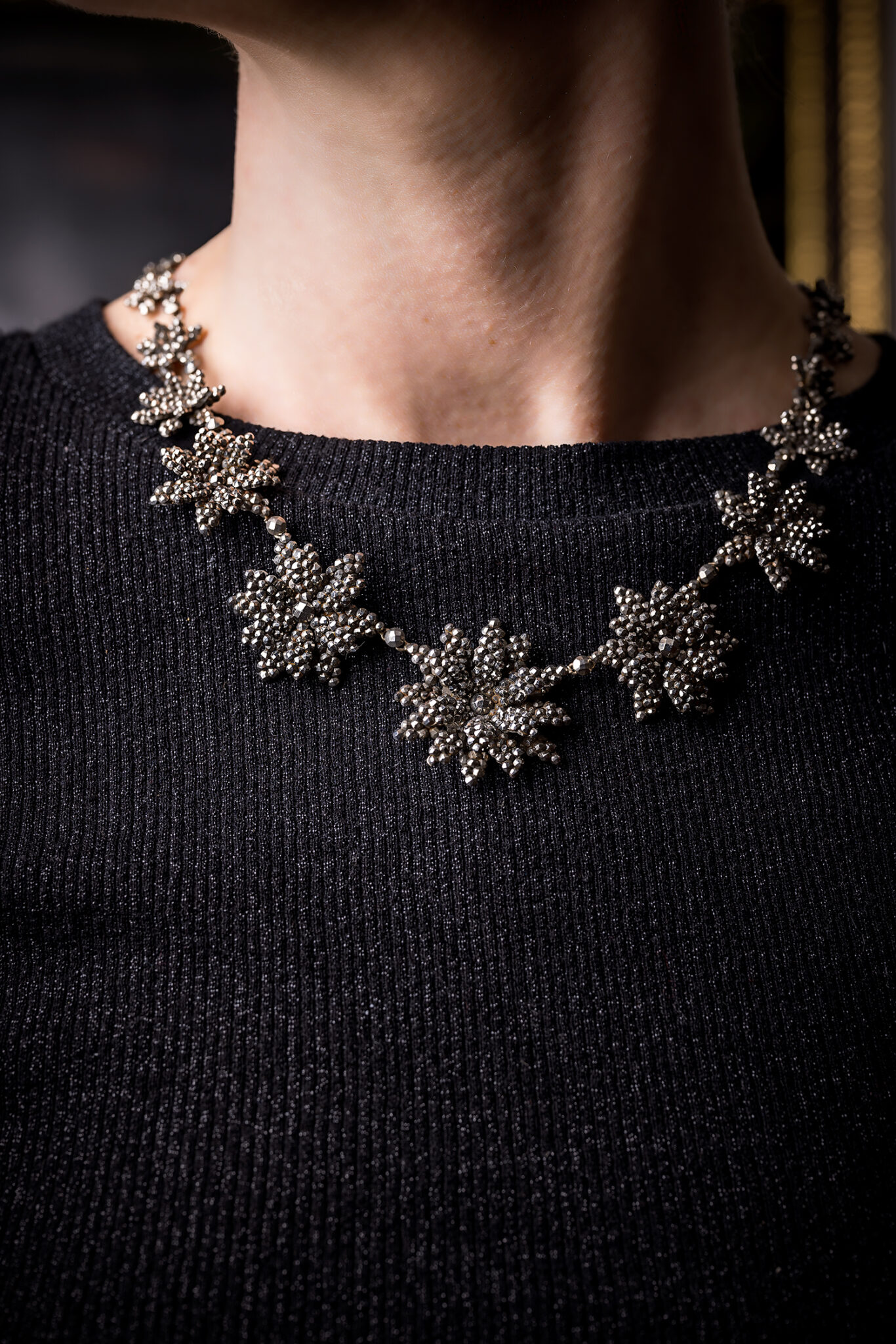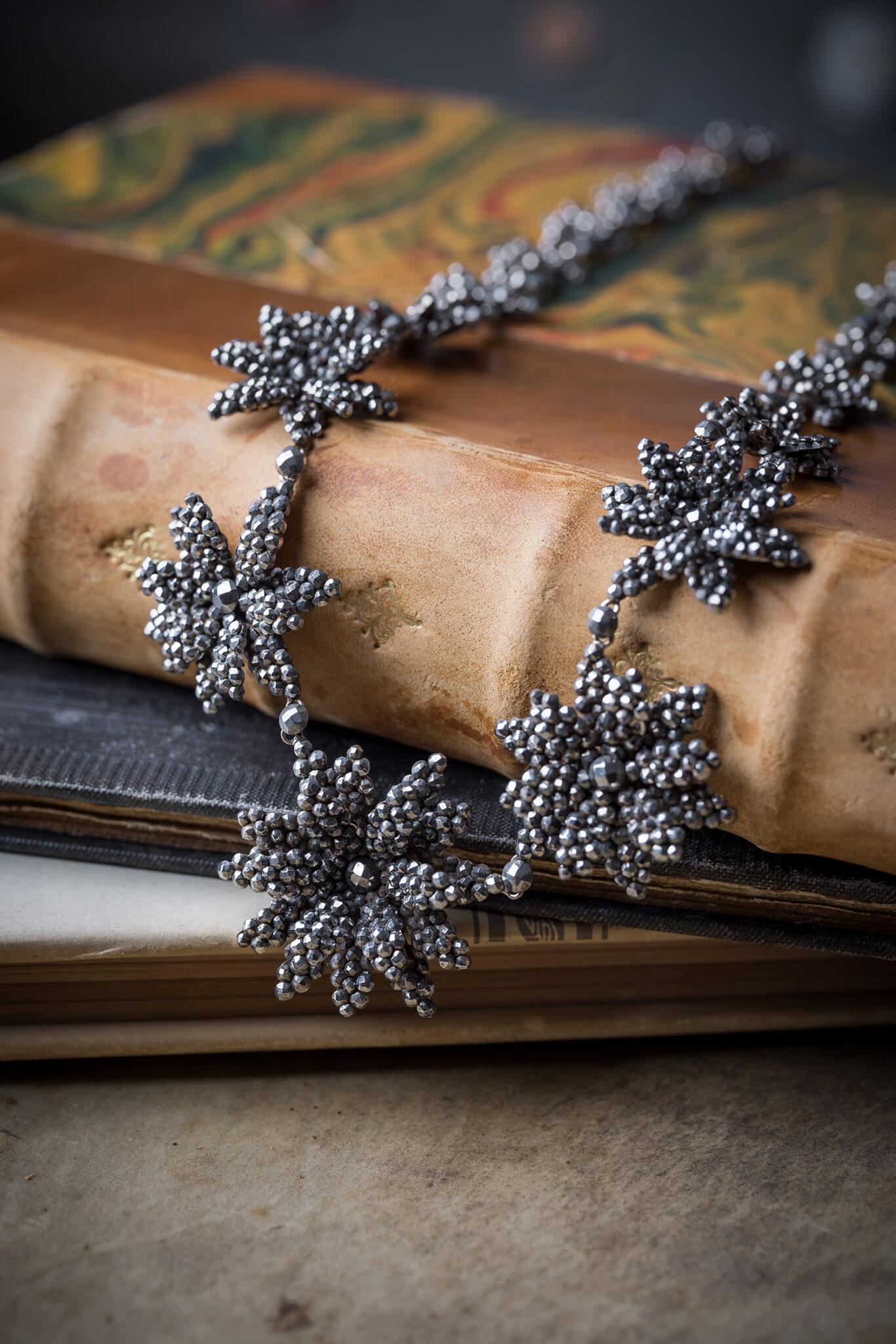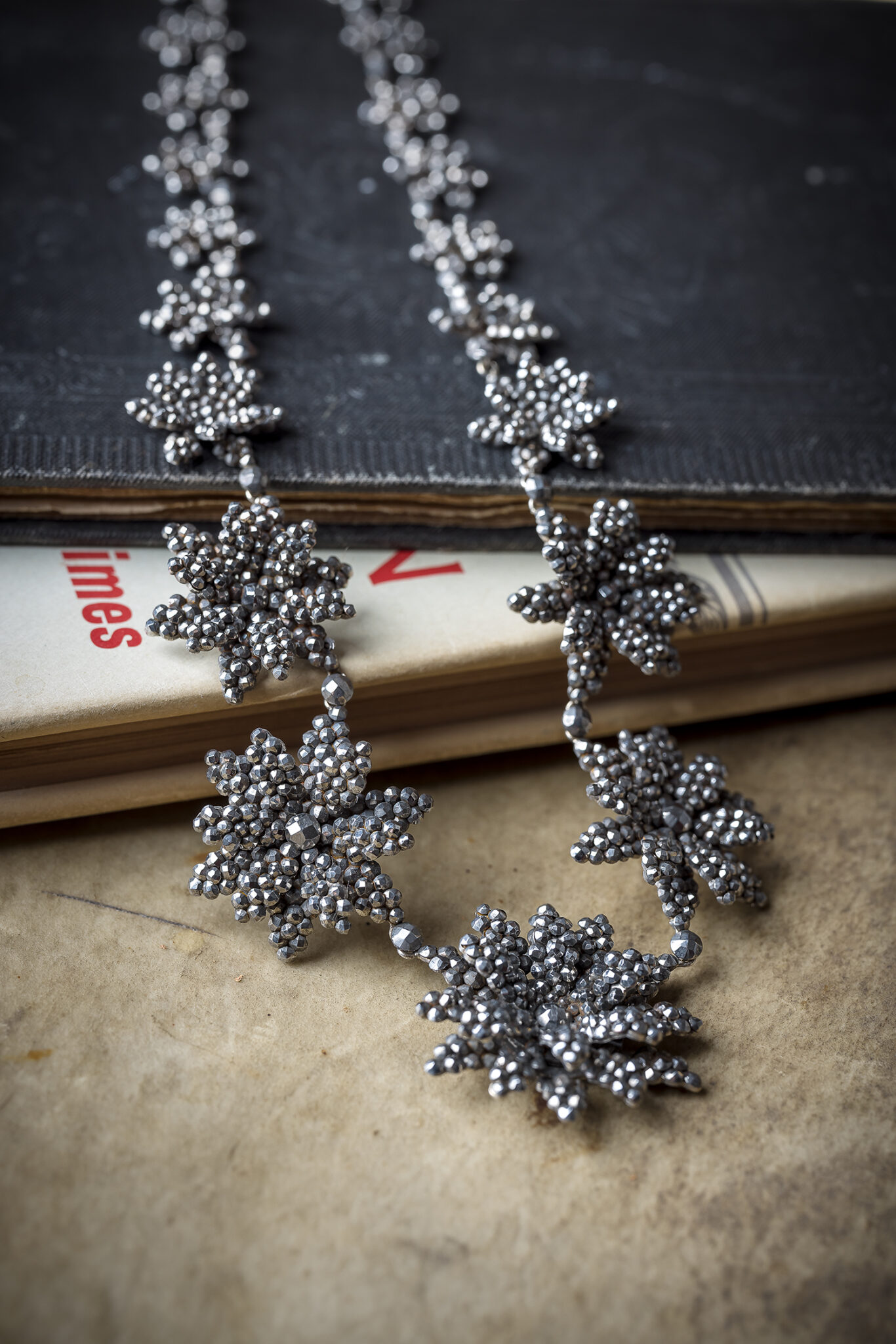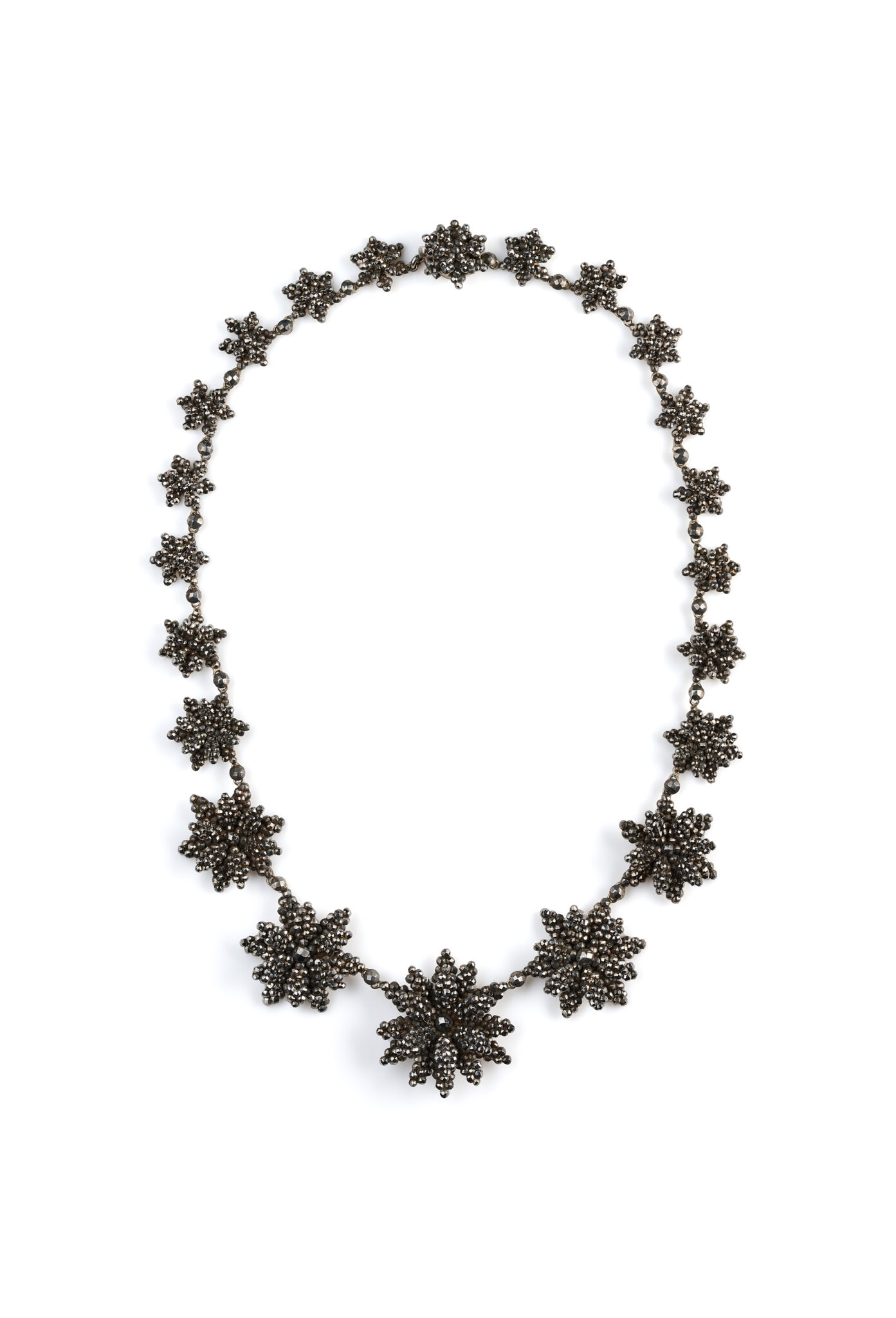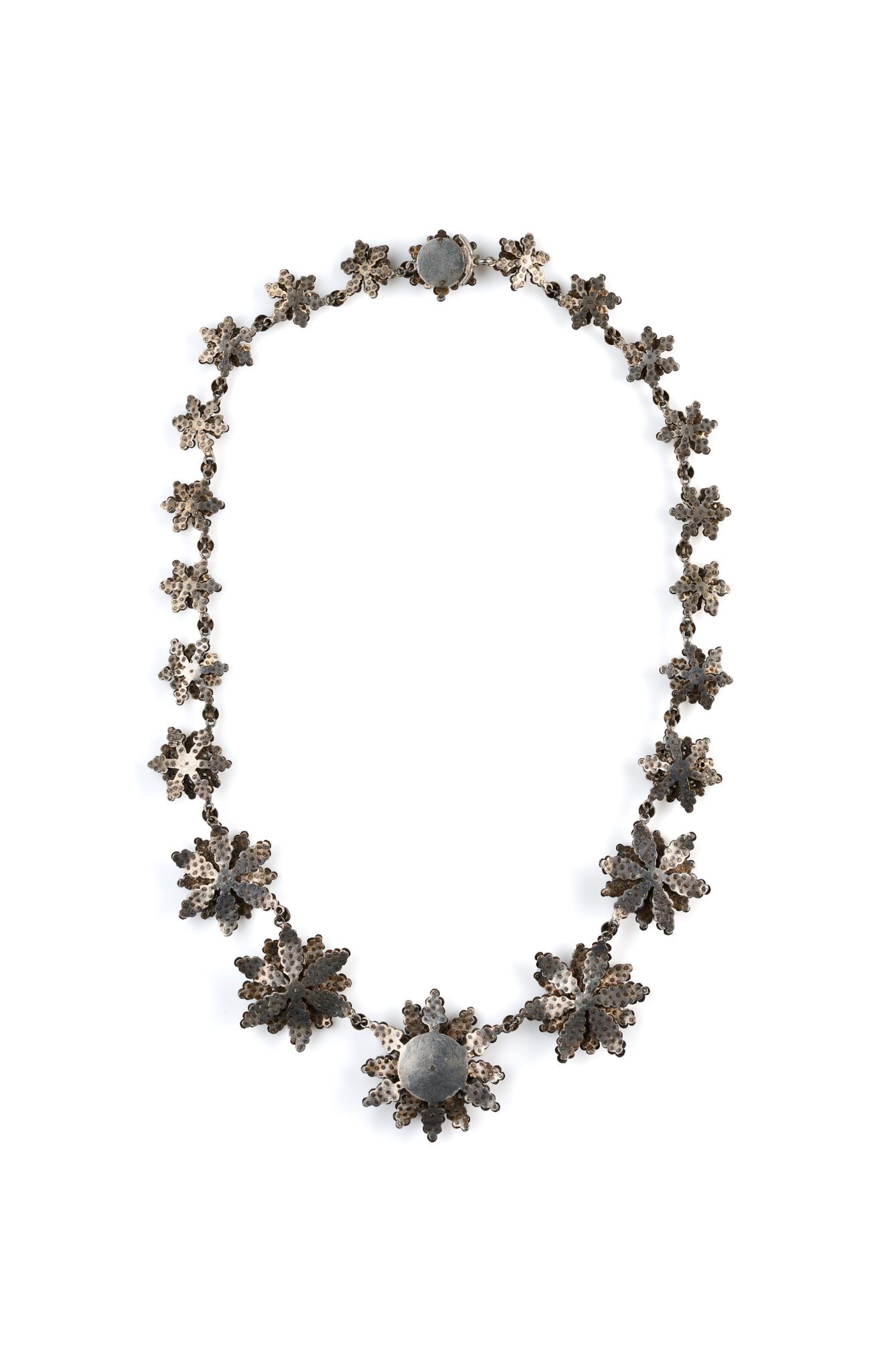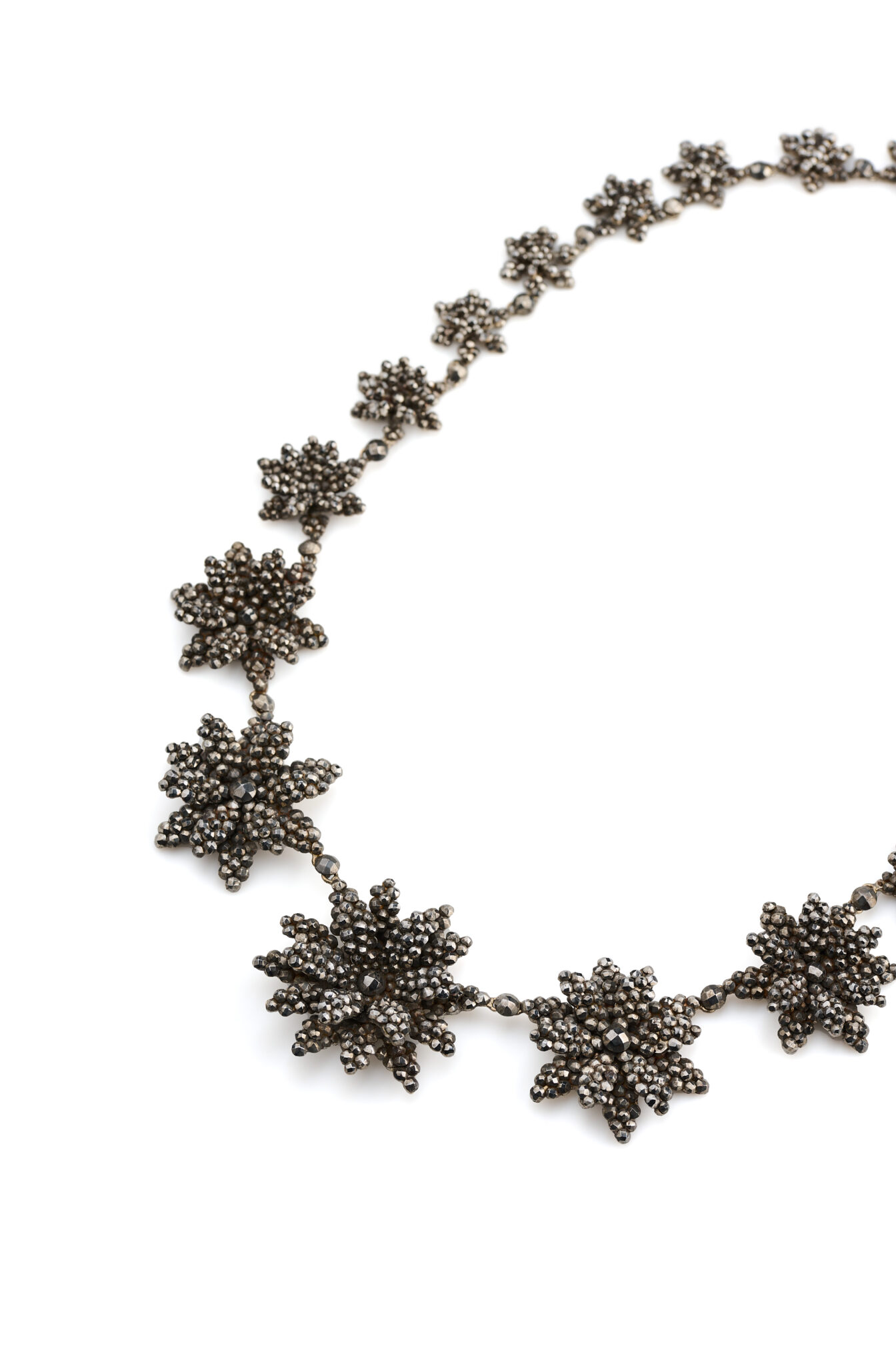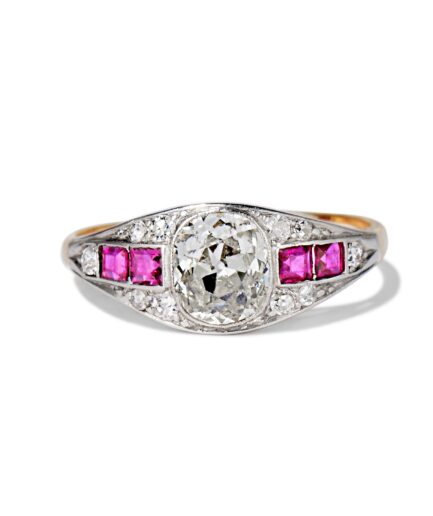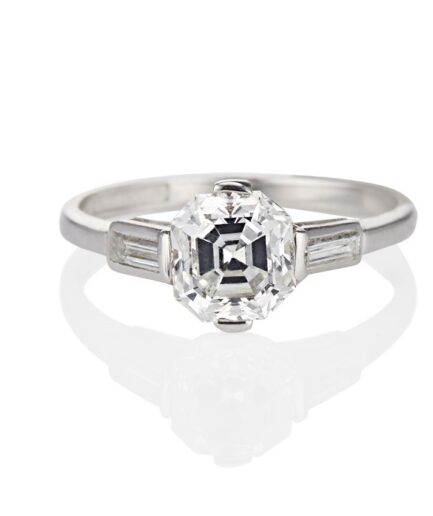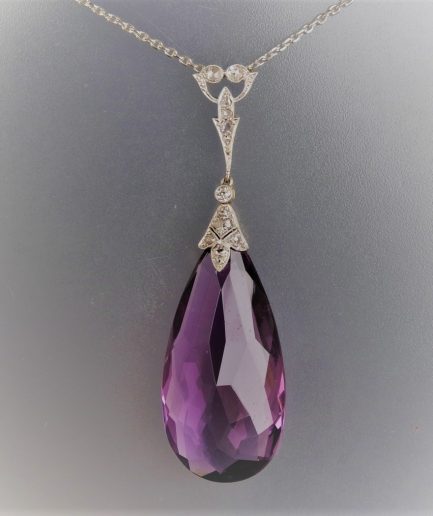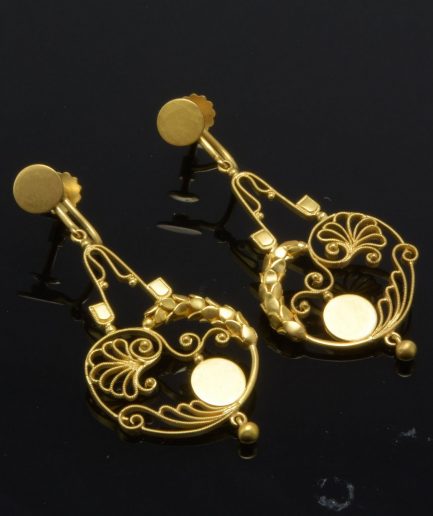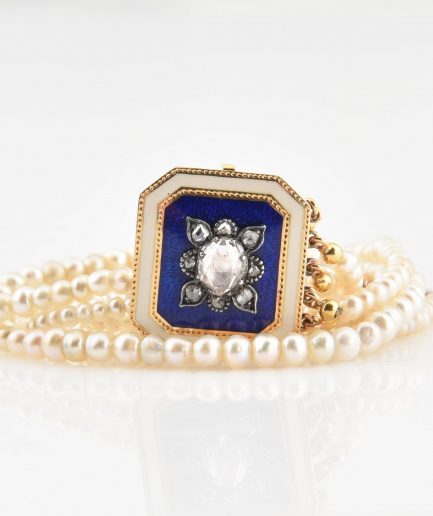Cut steel jewelry was at the height of fashion from the mid 1700s well into the 19th century.
Originated in the 1700s. Popular from the Georgian through the Victorian eras. To make cut steel, melted horseshoe nails were formed into tiny faceted beads. Those small steel gemstone-like studs were then riveted one-by-one onto a base plate. It was an English invention that quickly travelled throughout the world. Each stud could have up to 15 facets, and in general the finer and older the piece the more facets the studs will have.
Improvements in candles meant that grand events and entertaining could take place at night. As diamonds are diamonds and not available for everyone, and everyone wanted to shine, the popularity grew. Cut-steel provided a stylish and popular new jewelry material that could be enjoyed by everyone at all levels of society. It grew beyond a simple imitation to an art in its own right. The manufacturing was complex and the workmanship that was required highly skilled. These were not mass produced objects.
The studs were made from decarbonated cast steel, which was case-hardened, then the studs were faceted by cutting against a pewter wheel. Next were then polished with first fine emery and a hard brush, and then by hand with a special putty. Finally they were riveted onto pierced base plates which had to be drilled and cut by hand, too.
The main place of cut steel production was Birmingham, England. And there, one manufacturer stood out from all the rest: Matthew Boulton. He had been born in 1728 into the industry — his father manufactured small metal products. But the younger Boulton had a special talent for marrying the latest technology with the latest fashion. He also was continually expanding — he even founded a mint. He wined and dined with dignitaries and advocated for his steel products. Fortuitously, he became quite close with the Russian ambassador to Catherine the Great. When the ambassador toured the mint, Boulton made sure to send the Empress some of his cut-steel necklaces.
In 1759, Louis XV “encouraged” the nobility to donate their gold and gemstone jewelry to help fund the Seven Years War. The popularity of cut steel in France may in part have been due to these sumptuary laws which limited who could wear precious metals and diamonds. Either you complied with the law and gave up your family jewels to be melted down for the war chest, or you quietly hid your jewelry until the war was over. But you certainly weren’t seen wearing your fanciest ornaments — that would be unpatriotic. Cut steel jewelry, made of non-precious metal, was perfectly positioned to fill that bling gap. Manufacturers pivoted by creating more intricate cut steel jewelry. And the jewels got bigger and more elaborate.
Napoleon was a fan of the style, which certainly played a part in the longevity and popularity of cut steel. In 1810, he gifted a cut steel parure to his second wife, Marie Louise, upon their marriage. (In reality, he couldn’t afford a gemstone parure!). Cut steel jewelry became the staple of any fashionable lady’s evening wear ensemble. These dark, glimmering pieces give off a diamond-like shine that was and still is particularly effective in low lighting, which at the time was candlelight.
The style was so popular and in demand that at the peak of the trend, a fine piece of cut steel jewelry could command a higher price than gold. Silver jewelry was even made to resemble cut steel. The imitation became imitated.
Developments in technology toward the mid to late 19th century made it possible to produce these glittering steel elements by machine, making them more affordable and accessible — but by the early 20th century people had moved on to other jewelry trends. A look at the construction of the rivets, facets and baseplate will tell you if your cut steel piece was made in the early days of the trend, when everything was constructed painstakingly by hand, or later on using machine-made shortcuts.
Unfortunately, as a result of steel’s high corrosion factor, not many pieces have survived.
Producing a remarkable brilliance. Steel has an alluring appeal with its distinct gray blue coloration and catches the light from a myriad of angles. It is no wonder it has become so collectible and prized highly sought after today.
Elegant articulated steel necklace, composed of a stylizing drop of links flowers. It is embellished with an invisible ratchet clasp. Work probably English from the first half of the 19th century Length: 47.5 cm. In great condition, only 2 small studs missing.

